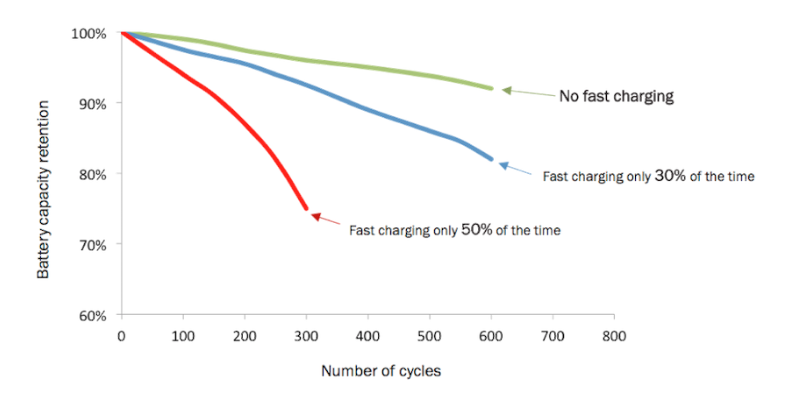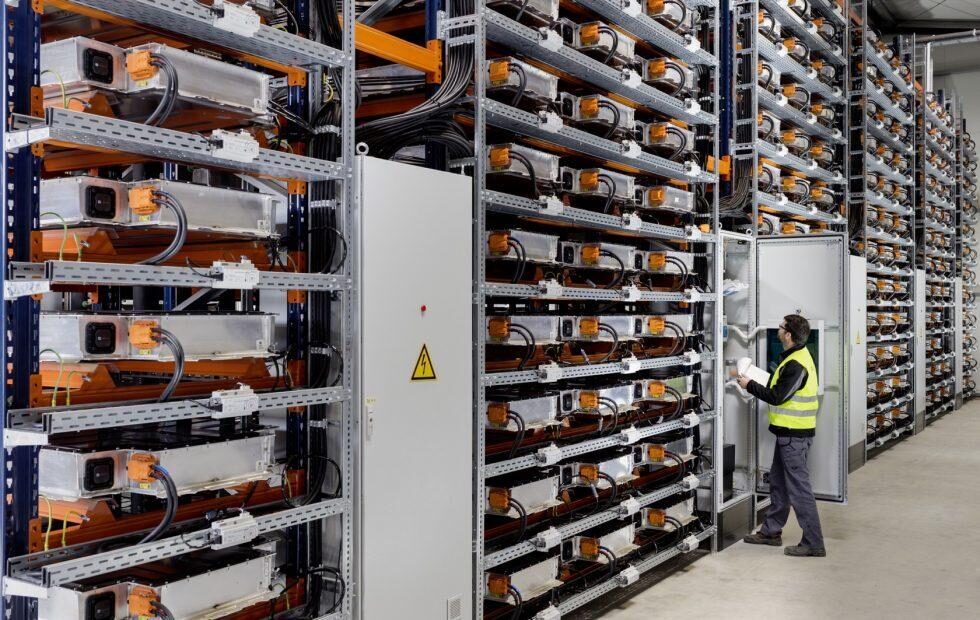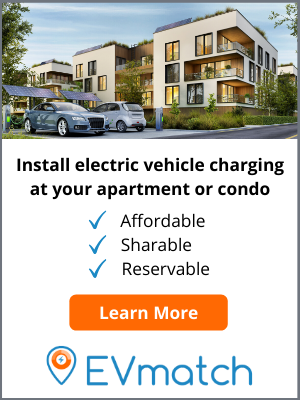Blog
Busting 3 Myths About Electric Vehicle Batteries And Charging
January 24, 2020
Post Author

Busting myths about electric vehicles could (and probably is) a full-time job for someone out there, especially on the topics of EV batteries and charging. Today, we’re going to bust 3 of these myths that I’m sure most of you have heard.
1. Fast charging (50kW or higher) is always better
As we transition from fossil fuel to electric vehicles, it’s no surprise that many people make the direct comparison of filling a car with gas to charging an EV. As such, the loudest EV critics say they won’t be satisfied until technology allows us to charge a car as fast as we can fill up at the pump. I personally know folks in the industry that believe fast charging is the only type of charging that drivers want. This betrays the fact that the vast majority (more than 80%) of charging today takes place at home with basic wall outlets (100V/120V) or dryer outlets (220/240V).
Consider this: what if fast phone chargers started appearing around town. Would you use them every time you needed a charge or would you still charge either at home when you’re sleeping or at the office when you’re working? You’d likely do some combination of the two. Car charging is no different.
Moreover, if you asked a current EV owner which is more expensive, she’ll tell you that fast-charging costs quite a bit more than Level 1 or Level 2 charging. And then there’s the impact of fast charging on your battery health…
2. Fast charging is not bad for your battery
Lithium-ion batteries have taken over. They power our phones, laptops, and yes, electric cars. When you plug in your phone to charge, you might notice that it becomes warm or even hot to touch. This is because the charging process moves ions around the battery, expending some energy as heat. Because fast charging requires higher charging current, more heat is generated carrying with it a higher likelihood of battery degradation.
The chart below illustrates battery degradation over time depending on how the battery is charged: the green line shows a decrease to 90% charge retention after 600 cycles with no fast charging; the blue line shows a decrease of 80% charge retention after 600 cycles with fast charging 30% of the time; and, finally and most sobering, the red line shows a decrease of 75% charge retention after only 300 cycles with fast charging 50% of the time.
Considering how essential fast charging is for prospective EV buyers, engineers and scientists are working hard to solve its negative impacts.
3. EV batteries will just end up in the landfill
We’ve all heard the naysayers argue that EVs are actually worse for the environment than gas cars because of 1) the mining operations required to extract battery materials and 2) the toxic release when we dispose of batteries in landfills. As for the first point, there’s no question that EVs have an environmental impact, but in our fight against climate change and given the fact that every single individual won’t abdicate their personal vehicle, EVs are the best option we have. As for the second point, batteries aren’t headed to landfills.
A 2017 study by Battery Council International found that 99.3% of lead-acid batteries are recycled, making them the #1 recycled consumer product in America. And while most lithium-ion batteries have yet to see their final day, it’s more than reasonable to assume they’ll be recycled at higher rates given they contain even more valuable materials.
Some of these EV batteries are already serving other purposes, “chilling beer at 7-Elevens in Japan, powering car-charging stations in California and storing energy for homes and grids in Europe.” BMW has built a battery bank out of used EV batteries to store energy from wind turbines at its plant in Leipzig, Germany. And if that still doesn’t placate the naysayers, Tesla has pledged to create a closed loop at its Gigafactories to use the same recycled material in its new products.
To all our fellow EV Mythbusters out there, thank you and keep up the good work. We’d love to know what myths you hear people spread about EVs. Leave them in the comments or join our Facebook group and let us know.









